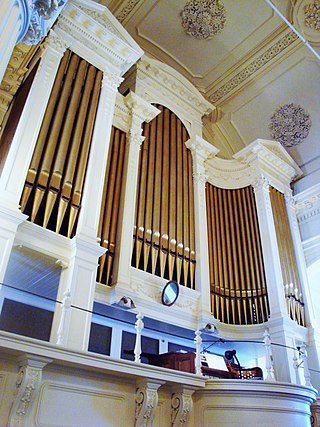
Æolian-Skinner Organ Company, Inc. of Boston, Massachusetts was an American builder of a large number of pipe organs from its inception as the Skinner Organ Company in 1901 until its closure in 1972. Key figures were Ernest M. Skinner (1866–1960), Arthur Hudson Marks (1875–1939), Joseph Silver Whiteford (1921-1978), and G. Donald Harrison (1889–1956). The company was formed from the merger of the Skinner Organ Company and the pipe organ division of the Æolian Company in 1932.

A theatre organ is a type of pipe organ developed to accompany silent films, from the 1900s to the 1920s.
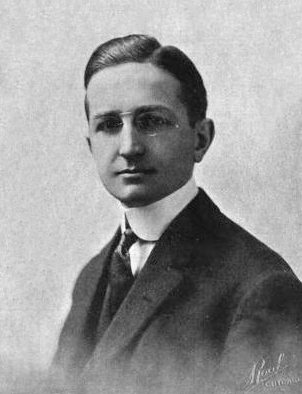
Ernest Martin Skinner was an American pipe organ builder. His electro-pneumatic switching systems advanced the technology of organ building in the first part of the 20th century.
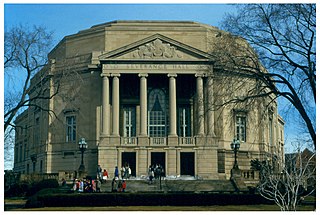
Severance Hall (newly named Severance Music Center) is a concert hall and the home of the Cleveland Orchestra in the University Circle section of Cleveland, Ohio. Opened in 1931 to give the orchestra a permanent home, the building is named for patrons John L. Severance and his wife, Elisabeth Huntingdon DeWitt Severance. It is listed on the National Register of Historic Places as part of Cleveland’s Wade Park District.
George Donald Harrison was responsible for the design of some of the finest and largest pipe organs in the United States. Born in Huddersfield, England, he first worked as a patent attorney in 1914 but after military service he began to pursue an interest in pipe organ building, working with Henry Willis & Sons of London.
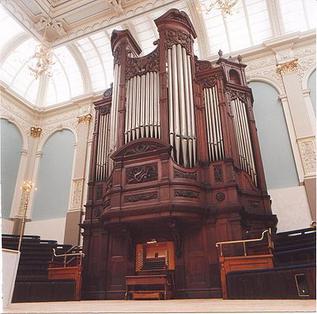
Henry Willis & Sons is a British firm of pipe organ builders founded in 1845. Although most of their installations have been in the UK, examples can be found in other countries.

Harrison & Harrison Ltd is a British company that makes and restores pipe organs, based in Durham and established in Rochdale in 1861. It is well known for its work on instruments such as King's College, Cambridge, Westminster Abbey, and the Royal Festival Hall.

The Cathedral of Mary Our Queen is a Catholic cathedral located in northern Baltimore, Maryland. The structure, remarkable in size, was completed in 1959.
N.P Mander Limited later Mander Organs Limited was an English pipe organ maker and refurbisher based in London. Although well known for many years in the organ building industry, they achieved wider notability in 2004 with the refurbishment of the Royal Albert Hall's Father Willis Grand Organ. That company filed for insolvency in 2020 with their trading name and intellectual rights being bought out by the Canterbury firm F. H Browne and Sons.

Austin Organs, Inc., is a manufacturer of pipe organs based in Hartford, Connecticut. The company is one of the oldest continuously-operating organ manufacturers in the United States. The first instruments were built in 1893 with the Austin Patent Airchest, and many remain in fine playing condition to this day.
E. and G.G. Hook was a pipe organ designing and manufacturing company, located in Boston, Massachusetts, which operated from 1827 to 1935. It was started, and originally run, by brothers Elias and George Greenleaf Hook.
William Drake (1943–2014) was the founder of the firm of William Drake, Organ Builder that manufactures pipe organs in Buckfastleigh, Devon, England. He held a Royal Warrant as organ builder to Queen Elizabeth II.
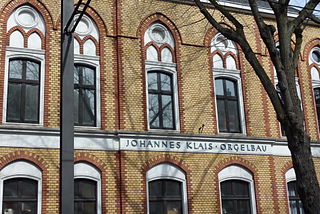
Orgelbau Klais is a German firm that designs, builds and restores pipe organs. It is a family run company, founded in 1882 by Johannes Klais senior and is now run by his great-grandson Philipp Klais. The firm is based in Bonn, Germany, and has completed many large-scale building and restoration projects around the globe in more than a century of organ building.

The Robert Morton Organ Company was an American producer of theater pipe organs and church organs, located in Van Nuys, California. Robert Morton was the number two volume producer of theatre organs, building approximately half as many organs as the industry leader Wurlitzer. The name Robert Morton was derived not from any person in the company, but rather from the name of company president Harold J. Werner's son, Robert Morton Werner.
Marcussen & Søn, also known as Marcussen and previously as Marcussen & Reuter, is a Danish firm of pipe organ builders. They were one of the first firms to go back to classical organ-building techniques, and have been producing mechanical-action organs since 1930. Aside from their many instruments in Denmark, they have built organs in northern Germany, Sweden, Finland, the Netherlands, Great Britain, South Africa, Japan, and the United States.
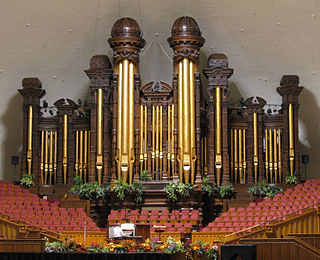
The Salt Lake Tabernacle organ is a pipe organ located in the Salt Lake Tabernacle in Salt Lake City, Utah. Along with the nearby Conference Center organ, it is typically used to accompany the Tabernacle Choir at Temple Square and is also featured in daily noon recitals. It is one of the largest organs in the world. Jack Bethards, president and tonal director of Schoenstein & Co., describes it as an "American classic organ" and "probably one of the most perfect organs ever built."

J. W. Walker & Sons Ltd is a British firm of organ builders established in 1828 by Joseph William Walker in London. Walker organs were popular additions to churches during the Gothic Revival era of church building and restoration in Victorian Britain, and instruments built by Walker are found in many churches around the UK and in other countries. The firm continues to build organs today.

Nicholson & Co. Ltd manufactures pipe organs. It was founded in 1841 by John Nicholson. Its work encompasses the creation of new instruments as well as historical restorations, rebuilds and renovations. In 2013, the firm completed the first wholly new instrument in a British cathedral since 1962 at Llandaff Cathedral in Cardiff.
Balcom and Vaughan Pipe Organs Inc. is the oldest pipe organ builder in the greater northwest. The company was founded in 1921 by C.M “Sandy” Balcom, who had previously worked for another organ builder, Sherman, Clay & Co. At the end of the silent film era, Balcom and Vaughan began to focus more on building or altering church instruments. Organs bearing Balcom's design influence were often small, unit organs, sometimes consisting of only three manuals. These projects commonly contained an amount of old pipe work or components from (redundant or altered instruments. As tastes began to lean toward European-based designs, Eugene “Gene” Nye was influential in revisioning Balcom and Vaughan instruments of the 1960s to respond to those tastes.













